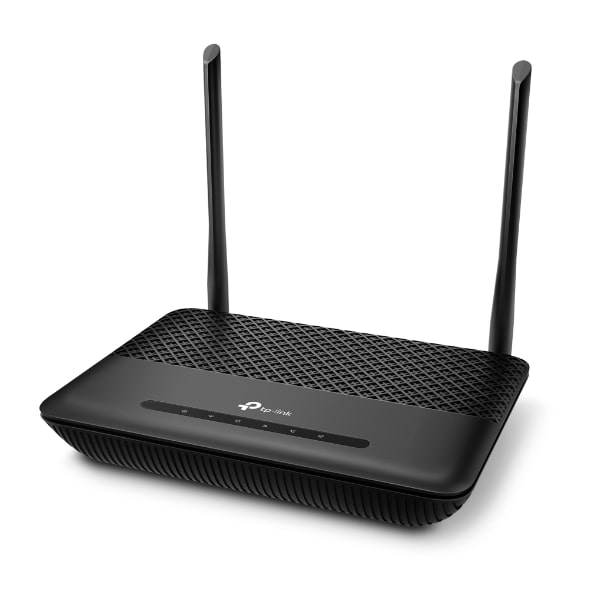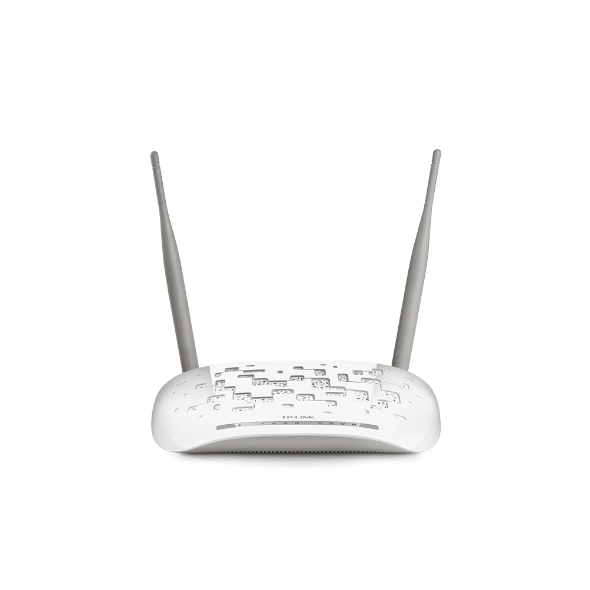TP Link Archer VR900 AC1900 Wireless Gigabit VDSL/ADSL Modem Router
$155.96
The TP-Link Archer VR900 makes full use of its dual band Wi-Fi abilities, reaching speeds of as high as 600Mbps on the 2.4 GHz band and 1300Mbps on the 5GHz band. Enjoy a total speed of up to 1.9 Gbps to eliminate buffering from your HD streams and lag from online games.
TP Link Archer VR900 Router Feature:
Versatile Connectivity— Ethernet WAN and USB ports, the VR900 is fully suitable with VDSL2/ADSL2+/ ADSL2/ADSL standard, fiber/cable access and 3G/4G USB dongles
Superfast Wi-Fi-– 600Mbps on 2.4 GHz + 1300Mbps on 5GHz
Max Range— 3 dual band detachable antennas offer max Omni-directional wireless coverage and reliability
1GHz Dual-core Processor— Makes certain no interruption while processing multiple wired or wireless tasks simultaneously
Beamforming Technology— Improves wireless range and performance on both 2.4 GHz and 5GHz band
Where To Buy TP Link Archer VR900 Router:
TP Link Archer VR900 Router Spec:
| Interface | 1 10/100/1000Mbps RJ45 WAN/LAN Port 3 10/100/1000Mbps RJ45 LAN Ports 1 RJ11 Port 2 USB 3.0 Port |
| External Power Supply | 12V/2.5A |
| IEEE Standards | IEEE 802.3, IEEE 802.3u, 802.3ab |
| VDSL2 Standards | ITU-T G.993.2, Up to 17a profile (POTS) ITU-T G.993.5 (G.vector) ITU-T G.998.4 (G.INP) |
| ADSL Standards | Full-rate ANSI T1.413 Issue 2, ITU-T G.992.1(G.DMT), ITU-T G.992.2(G.Lite), ITU-T G.994.1 (G.hs), ITU-T G.995.1 |
| ADSL2 Standards | ITU-T G.992.3 (G.DMT.bis), ITU-T G.992.4 (G.lite.bis) |
| ADSL2+ Standards | ITU-T G.992.5 |
| Antenna Gain | 3 x 2dBi for 2.4GHz and 3 x 3dBi for 5GHz |
| Wireless Standards | IEEE 802.11a/n/ac 5GHz, IEEE 802.11b/g/n 2.4GHz |
| Wireless Speeds | 1300Mbps at 5GHz, 600Mbps at 2.4GHz |
| Frequency | 2.4GHz and 5GHz |
| Transmit Power | <20dBm(EIRP) |
| Wireless Functions | Enable/Disable Wireless Radio, WDS Bridge, WMM, Wireless Statistics Support 2.4GHz and 5GHz Wireless Schedule |
| Wireless Security | 64/128-bit WEP, WPA/WPA2, WPA-PSK/WPA-PSK2 encryptions, Wireless MAC Filtering |
| Guest Network | 2.4GHz guest network x 1, 5GHz guest network x 1 |
| Package Contents | AC1900 Wireless Dual Band Gigabit VDSL/ADSL Modem Router Archer VR900 External Splitter RJ11 DSL Cable RJ45 Ethernet Cable Power Adapter Quick Installation Guide |

TP Link Archer VR900 Router Reviews:
Now, we take BT home hub 5 as a reference to see how the performance of TP Link Archer VR900 Router.
There are multiple facets to router effectiveness and we can begin with some simple-yet-pertinent details. When using the BT Home Hub 5, the BT Infinity service synchronised with the local exchange at 56.1 Mbps downstream and 13.4 Mbps upstream. Suggesting that a premium router is capable of more than just enhanced wireless, TP-Link’s Archer VR900 settled in at slightly higher speeds of 61.6 Mbps and 14.7 Mbps, respectively.
Our next port of call is wired performance, or how quickly can we transfer a 2GB file from laptop to NAS with a particular router. Beginning off with the BT Home Hub 5 returned read and write speeds of 850Mbps and 483Mbps, respectively. Turning to the TP-Link Archer VR900 saw read speed remain consistent at 852Mbps – the effective limit of the Gigabit Ethernet interface – but write speed improved to 570Mbps.
How about wireless? Well, remember what we said about taking the “up to 1,900 Mbps” wireless speed with a pinch of salt? It would take various roaming devices to saturate such bandwidth, and it’s worth pointing out that the TP-Link wireless adapter linked to our laptop is rated at as high as 300Mbps on 2.4 GHz and 800Mbps on 5GHz.
At Location A – the room directly above the router – the Archer VR900 scored similarly to the BT Home Hub 5 on the 2.4 GHz band but stretched its legs during the 5GHz download, registering 247Mbps (around 31MB/s).
Interestingly, it’s Location B – straight across the ground floor at a distance of roughly 45ft – that poses the biggest challenge. Turning to the TP-Link Archer VR900 sees a performance uplift in almost every scenario, though uploads on the 5GHz band appear to be a recurring weak spot.
Location C, on the top floor, might represent a worst-case-scenario, but both routers do reasonably well. There’s hardly anything in it with regards to throughput on the 2.4 GHz band, but the Archer VR900 once again pulls out a convincing lead in 5GHz downloads, where it’s 60 per cent quicker than the BT Home Hub 5.
A healthy gain, but it’s worth remembering that wireless is no match for a wired connection – the finest WiFi download handled by the Archer VR900 is still around 70 percent slower than a direct cable.
We’ve seen performance improvements in most areas and that trend continues with USB storage. The BT Home Hub 5’s USB 2.0 port is outdated by today’s standards and easily outpaced by the Archer VR900’s USB 3.0, which handled far more usable read and write speeds of 429Mbps and 247Mbps, respectively.
The only potential snag is that the overall increase in performance results in higher power consumption. We see a two-fold increase in power draw, and the Archer VR900 does get quite warm during use, but the added running costs are a small inconvenience in the grand scheme of things.
Final:
Since the software is good and the performance is truly excellent, we wouldn’t hesitate to recommend the Archer VR900. TP-Link has come a long way in a short time.










Silvia –
I used to be an ADSL user and recently switched to a DSL line at home, so I also had to buy a DSL router because the monthly rent is too expensive for me in the long run. Since I like to try something, I bought the DSL router in a retail store and unfortunately saw too late that it is also cheaper on Amazon. The optics fit and the antennas are quick and easy to install. Setting up software was no problem and the router has been running consistently stable for four months now without having to restart it. Currently I have about ten WLAN devices running parallel in the house and I have not had a single problem here. The new firmware I downloaded and installed without any problems and I have the impression that the WLAN has become even faster. Clear purchase recommendation.